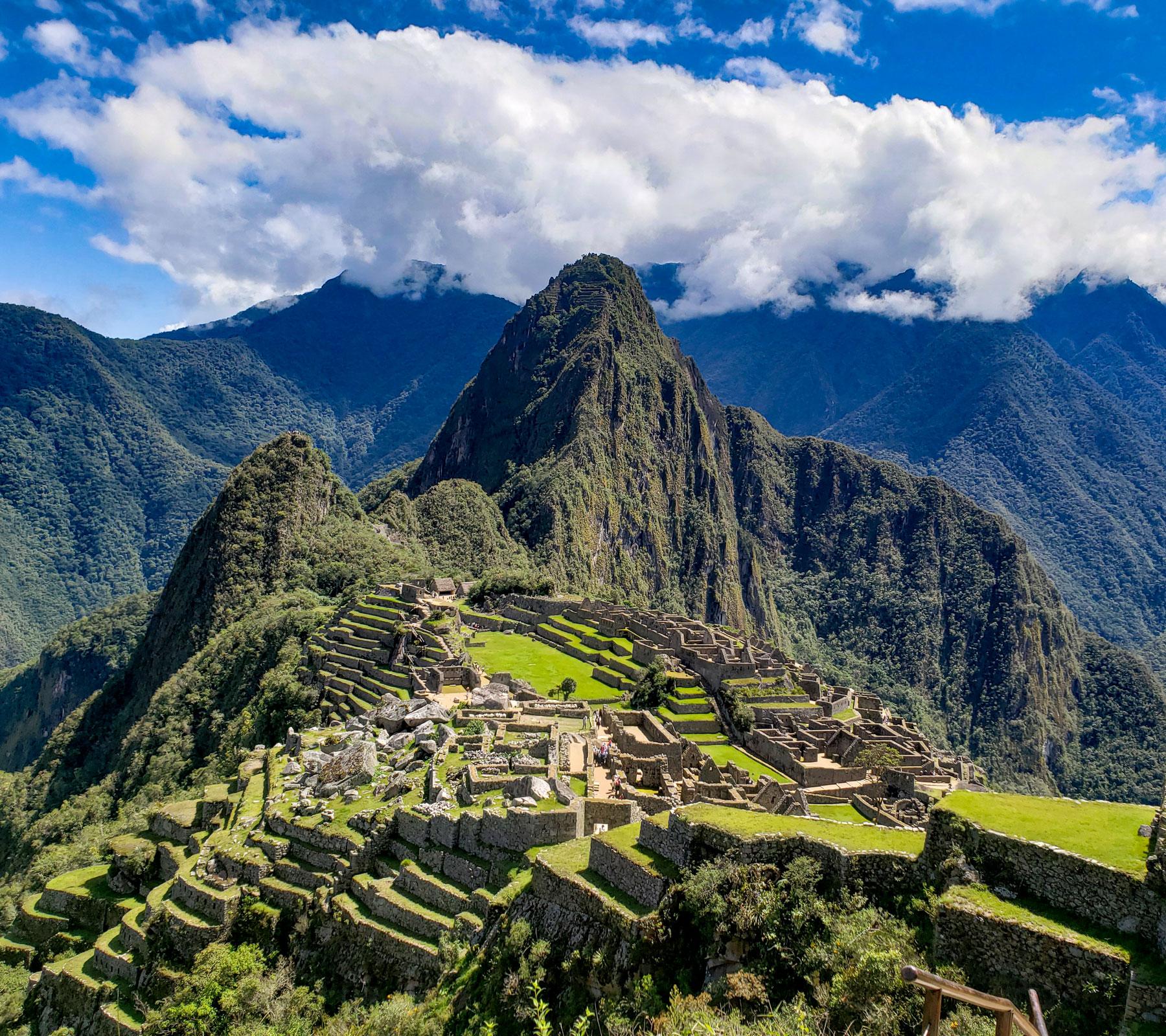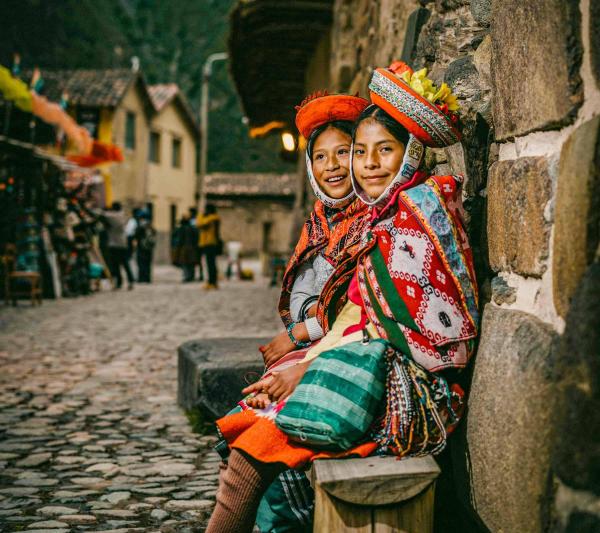Machu Picchu, Peru Explore the Historic Sanctuary and World Wonder
Machu Picchu
The Inca citadel of Machu Picchu stands as a testament to the ingenuity of ancient human engineering and has been recognized as a UNESCO World Heritage Site since 1983. Constructed with enormous stone blocks that fit together with remarkable precision, the structures blend seamlessly into the rugged mountain ridge in the Peruvian Andes. This hidden city, perched at an elevation of 2,450 meters, remained unnoticed by the Spaniards when they first conquered the region.
Machu Picchu captivates with its grandeur and enigmatic atmosphere. Tucked away in the remote Urubamba Valley of southeastern Peru, it attracts visitors from across the globe, eager to discover this extraordinary remnant of the Andean civilization. However, the constant influx of tourists poses a growing challenge for the preservation of this ancient Inca city. Those wishing to visit Machu Picchu should be mindful of its delicate nature and adhere to the established guidelines.
Machu Picchu: Unveiling a Wonder of Hidden Legacy
Machu Picchu is regarded as one of the final strongholds where the Incas left their mark. Nestled behind rugged rock formations, with the wild Urubamba River carving through the dense jungle below, this settlement rests on a secluded plateau at an altitude of 2,430 meters. In the mid-15th century, the proud Andean civilization constructed over 200 houses here, meticulously crafted from precisely cut stones, all without the use of metal tools, wheeled vehicles, or mortar. But why did they undertake such a monumental task? Was it intended as a pilgrimage site, a royal retreat, or perhaps an administrative hub? All these possibilities are plausible, yet none can be definitively proven.
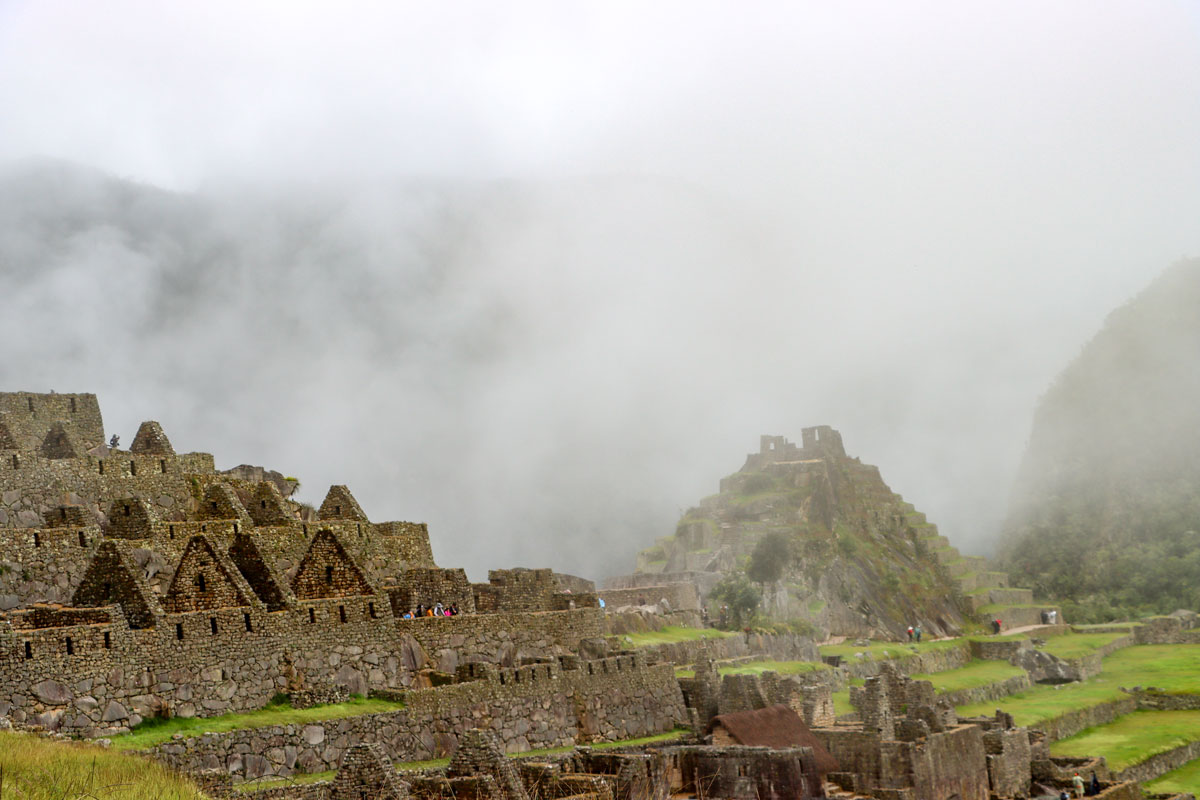 |
Machu Picchu Peru
|
No written records have survived, as the Incas did not use a writing system. Even the original name of this settlement is unknown, and it now bears the name of the mountain on which it majestically sits. Only recently did two scholars suggest that the name Machu Picchu became established only after its rediscovery by Hiram Bingham. Before Bingham brought the lost city to the attention of the Western world in 1911, it lay hidden beneath twisted vines and layers of moss, undisturbed even by the Spanish conquerors who missed Machu Picchu during their plundering expeditions through Peru’s treacherous mountains. This oversight left a unique opportunity to explore the grand and subtle mysteries of the Inca Empire among intact irrigation systems, dwellings, and temples.
A Global Marvel
Machu Picchu gained worldwide recognition when the esteemed American magazine, National Geographic Society, devoted an entire issue to the Incan marvel in 1913. Since then, Machu Picchu has become a magnet for travelers from all corners of the globe. Today, this remote and hard-to-reach Inca city ranks among the most sought-after tourist destinations in the world. Each year, hundreds of thousands of visitors embark on the challenging journey to this mountain sanctuary to experience its enchanting aura. In 1983, Machu Picchu was officially designated a UNESCO World Heritage Site.
Hiram Bingham’s name became synonymous with the site due to his remarkable discovery, which even inspired the famous Indiana Jones film series.
Controversy Over Treasures
Bingham’s legacy is also tied to a long-standing dispute over the rightful ownership of Incan artifacts. The Peruvian government at the time permitted Bingham to transport these treasures to the United States. These artifacts were exhibited at Yale University’s museum and only returned to Peru a century later after extensive negotiations between the Peruvian government and the university. Today, these pottery, jewelry, and bone artifacts from the lost world of the Incas are displayed in a museum in Peru’s capital.
A Continuing Debate
The issue of returning cultural artifacts is still hotly debated. Other museums, like the Linden Museum in Stuttgart, have also repatriated art and historical items to their countries of origin. The broader question of how nations should handle art that was stolen or otherwise removed from its homeland remains a point of contention. Discussions often center around whether these pieces should be returned or if other forms of reparations are more appropriate.

Machu Picchu and the Gaps in Incan Chronology
When determining the age of the Inca city and its construction, archaeologists have traditionally relied on historical accounts from the Spanish conquerors, especially the chronicles from 1586. According to these records, Machu Picchu was one of the royal estates of the Inca ruler Pachacuti. He came to power in 1438 and gradually expanded his empire across much of the central Andes, including the Urubamba Valley, where Machu Picchu is located. To commemorate his conquest, Pachacuti is believed to have ordered the construction of the mountain settlement between 1440 and 1450.
However, more recent radiocarbon dating of other Inca sites has cast doubt on the timelines derived from these Spanish accounts. As of now, no definitive dates for Machu Picchu have been established. According to researchers at Yale University, "The absence of radiocarbon measurements was partly due to the widespread belief among many archaeologists that such analyses were unnecessary, given the ability to date Inca sites like Machu Picchu using Spanish records," explains Richard Burger of Yale University and his colleagues.
Machu Picchu: Construction Completed Earlier Than Thought in 1420
New evidence suggests that Machu Picchu may have been completed as early as 1420. To address the discrepancies, archaeologists recently employed accelerator mass spectrometry (AMS) radiocarbon dating to examine the remains of 26 individuals buried at Machu Picchu. "The individuals buried in Machu Picchu’s burial caves show few signs of heavy physical labor, such as farming or construction," reports Burger and his team. They believe these people were palace servants who attended to the Inca ruler and Cusco elites during their stays, and managed the estate in their absence.
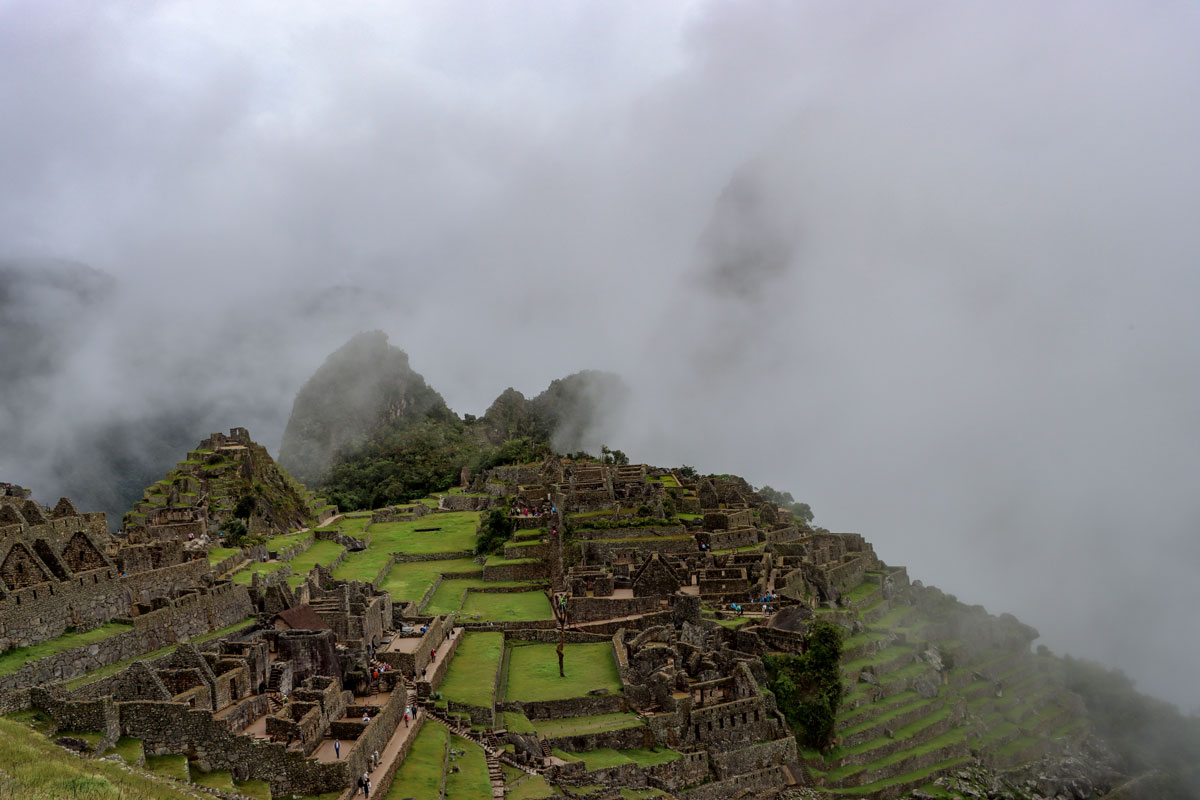 |
Machu Picchu
|
The Original Name of Machu Picchu
Over time, the site we now know as Machu Picchu wasn’t always referred to by this name. Local communities initially identified it as Picchu Mount or Huayna Picchu, as noted by Hiram Bingham, who referred to it as Picchu Mount in his writings. However, over time, the name evolved to Machu Picchu, and its original name faded into history. In Quechua, "Machu" means "old," and "Picchu" means "mountain," while "Huayna Picchu" translates to "young mountain".
Machu Picchu: Exploring the Inca City
The Machu Picchu site is oriented roughly from south to north, stretching approximately 800 to 1,000 meters in length and up to 500 meters in width. Hiram Bingham divided the site into various sectors, assigning specific names to different structures, although their precise functions remain largely unknown. The Upper Town, situated in the western section of the city, includes the Palace Quarter and the Temple Quarter. The entrance features a well-preserved city gate. Notable buildings in the palace district are the Inca Palace (Incahuasi), the Princess's Palace (Palacio de la Ñusta), and the High Priest's Palace (Palacio del Willac Umu).
The Inca Palace, or Royal Palace, is comprised of several rooms constructed with granite blocks and includes a distinctive trapezoidal gate. The Princess’s Palace, a grand two-story building, is surrounded by simpler outbuildings, likely used for accommodating servants. The High Priest’s Palace is situated on an elevated, sacred spot, reflecting the high status of its occupant who held significant religious and political power, akin to that of the Inca ruler.
Significant structures in the temple district include the Temple of the Three Windows, the Main Temple, and the Sun Stone (Intihuatana). The Temple of the Three Windows is notable for its three large trapezoidal windows on the east side, constructed from massive stone blocks.
The Main Temple, also featuring three walls made from finely fitted stone blocks, was dedicated to the sun god. At the highest point of the temple district stands the Sun Stone, a 1.80-meter high stone with a square spur rising from its base. The four corners of this stone are aligned with the cardinal directions. The Sun Stone served as an astronomical tool, aiding in calendar calculations, seasonal predictions, and planting timings. It was used for solar observations and as a sundial.
In the eastern section of the city, the lower town comprises various quarters, including residential, artisan, agricultural, and storage districts, as well as a prison area. The city is believed to have contained about 220 buildings and housed around 400 permanent residents, with a capacity to accommodate up to 3,000 people at peak times, providing water and food for pilgrims.
Residential structures, palaces, and temples are arranged on terraces and connected by a network of staircases. The southern part of the city features extensive terraced fields with a sophisticated irrigation system, with vertical terraces extending down the ridge to the rocky areas. Potatoes and corn were primarily cultivated.
To the north of the ruins, at the end of the ridge, stands the mountain peak that lends the city its name, Machu Picchu (meaning "Old Peak" at 3,140 meters). In the foreground lies Huayna Picchu ("Young Peak" at 2,700 meters).
Above Machu Picchu, to the southeast at about 2,745 meters, is the enigmatic "Sun Gate." The first rays of sunrise pass through this gate, illuminating Machu Picchu and reaching the Sun Stone situated on the western ridge.
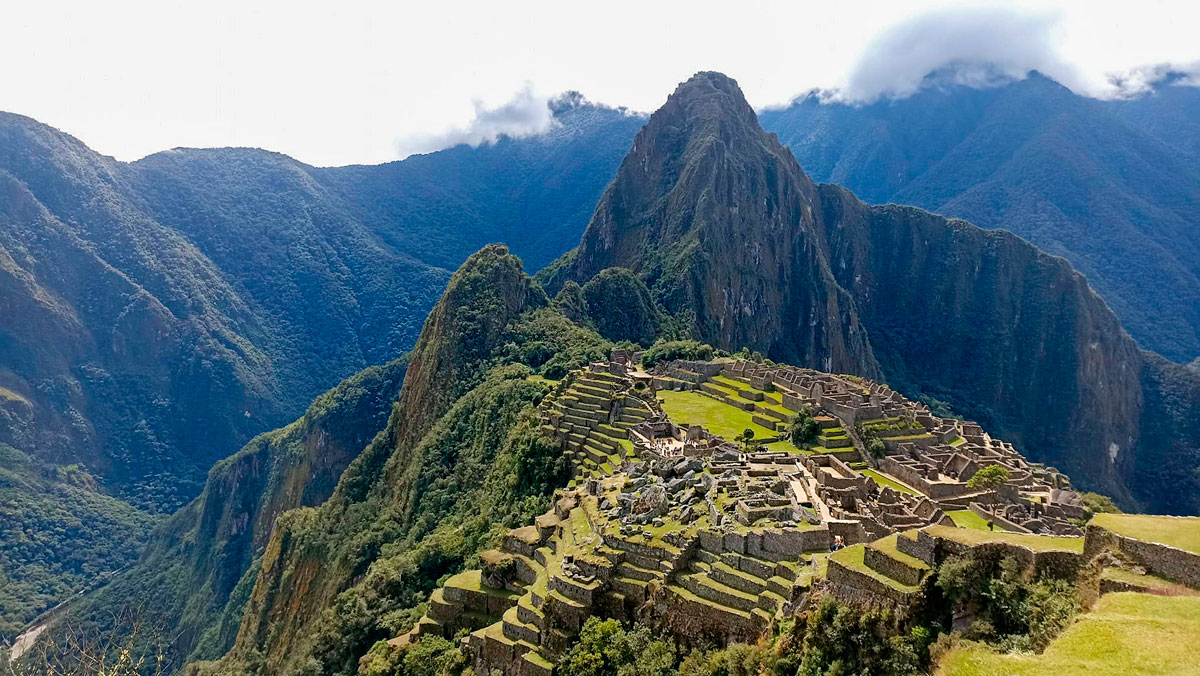
Machu Picchu: Why Was It Built?
For nearly every visitor to Peru, Machu Picchu is the ultimate destination. We’ve all seen countless images of this majestic site and eagerly anticipate experiencing it in person. The impressive ruins, built by the Incas, are a UNESCO World Heritage Site and one of the New Seven Wonders of the World. Discovered by American explorer Hiram Bingham in 1911, Machu Picchu had remained hidden from the Spanish conquerors.
The reasons behind the construction of Machu Picchu remain shrouded in mystery, sparking much debate and speculation. Scholars and archaeologists continue to explore the purpose of this enigmatic site. Each tour guide offers their own interpretation of Machu Picchu’s significance, contributing to the ongoing discussion about this remarkable Inca creation.
Machu Picchu: A Treasure of Global Heritage
The entire Inca Trail (Camino Inca), encompassing its valleys, steep stone paths, historic steps, mountainous terrain, and Inca ruins—covering an area of approximately 350 km²—was designated as a protected natural area by the Peruvian government in 1981. This region is known as the “Historical Sanctuary of Machu Picchu.”
In 1983, this sanctuary was recognized as a UNESCO World Heritage Site. It stands as one of the rare locations where both cultural heritage and its natural surroundings are preserved together.
However, this precious heritage site faces significant threats. At a UNESCO symposium in March 2001, researchers from Kyoto University revealed alarming findings from long-term studies. They reported that the western section of Machu Picchu (the upper town) is shifting downward at a rate of 1 cm per month, a potential precursor to a landslide. If this upper area were to collapse into the Rio Urubamba, it could destabilize the lower town, causing it to potentially slide eastward into the river.
Machu Picchu: A Seven wonder of the World
Machu Picchu, one of the New Seven Wonders of the World, is a breathtaking testament to the ingenuity of the Inca civilization. Nestled high in the Andes Mountains of Peru, this ancient city captivates visitors with its stunning architecture, mysterious history, and panoramic views. A visit to Machu Picchu is not just a journey to a UNESCO World Heritage Site but an unforgettable experience of one of humanity's greatest achievements.
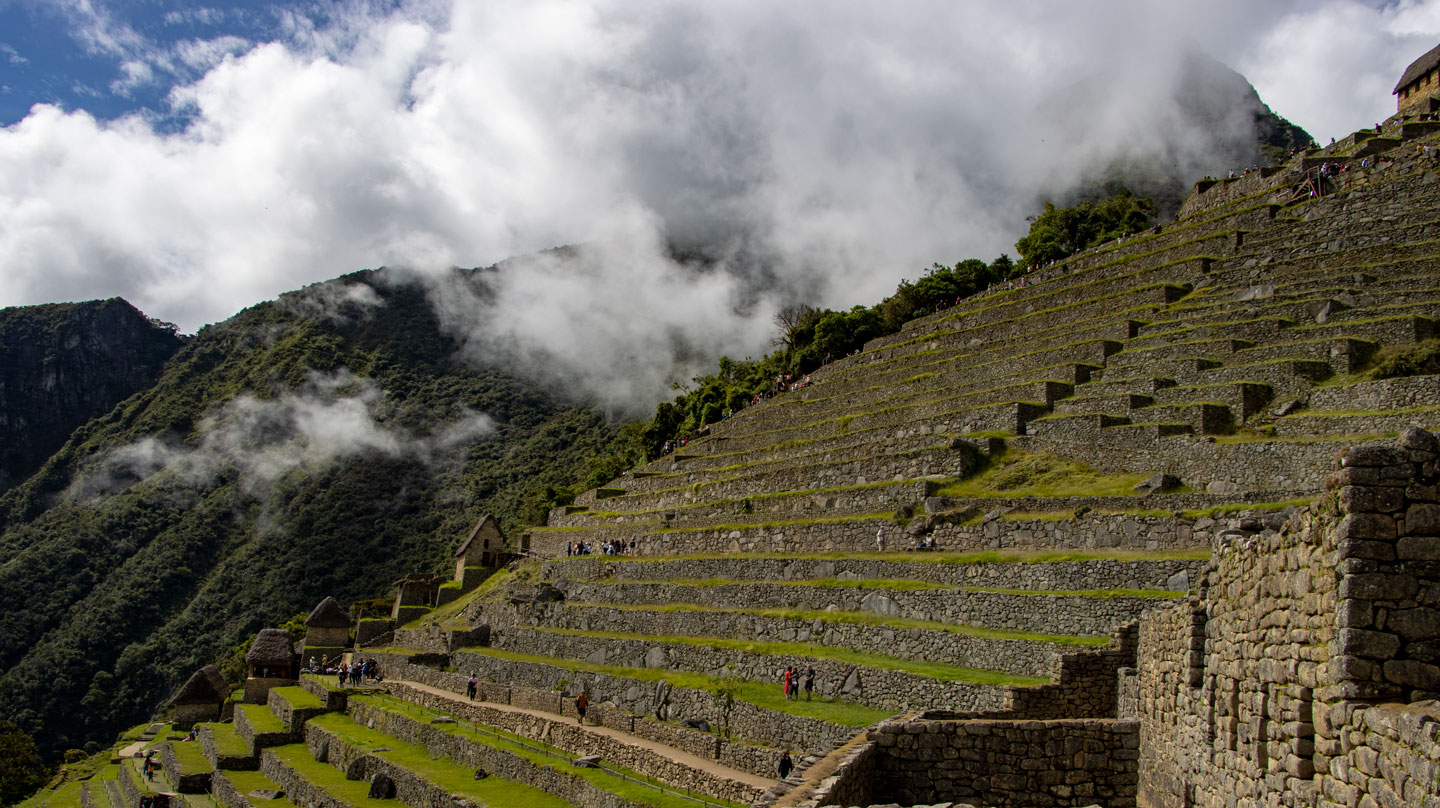
7 Wonder of the World
The New Seven Wonders of the World, a list compiled in 2007 through a global poll, celebrates some of the most iconic and culturally significant landmarks on Earth. These wonders include:
Machu Picchu (Peru): This ancient Inca city, perched high in the Andes, is renowned for its sophisticated dry-stone construction, breathtaking views, and mysterious history, making it a must-visit for travelers.
The Great Wall of China (China): Spanning thousands of miles, this monumental structure was built over centuries to protect Chinese states from invasions. It stands as a symbol of perseverance and engineering prowess.
Petra (Jordan): Known as the Rose City for its pink sandstone cliffs, Petra is an archaeological marvel. The city, carved directly into the rock, was once a thriving trade center and remains a UNESCO World Heritage Site.
Christ the Redeemer (Brazil): Towering over Rio de Janeiro, this iconic statue of Jesus Christ is a symbol of peace and Christianity. It offers panoramic views of the city and is one of the most recognized monuments in the world.
The Colosseum (Italy): Located in the heart of Rome, this ancient amphitheater is a testament to the grandeur of Roman engineering. Once the site of gladiatorial contests, it now stands as a symbol of Italy’s rich history.
Chichen Itza (Mexico): This ancient Mayan city on the Yucatán Peninsula is famous for its pyramid, El Castillo, which aligns with astronomical events. It offers insights into the advanced knowledge of the Mayan civilization.
Taj Mahal (India): A masterpiece of Mughal architecture, this white marble mausoleum was built by Emperor Shah Jahan in memory of his wife Mumtaz Mahal. It’s widely regarded as the most beautiful building ever created.
These wonders represent the diverse cultural heritage of humanity, each with its unique story and significance. Among them, Machu Picchu stands out not only for its architectural brilliance but also for its breathtaking natural setting in the Peruvian Andes, making it a must-see for travelers seeking a connection with history and nature.
Machu Picchu Peru: Key Insights
Machu Picchu stands as the highlight of any visit to Peru. This enigmatic Inca city is situated 120 kilometers from the city of Cusco, nestled in the Urubamba Valley. Since its rediscovery in 1911 by American explorer Hiram Bingham, numerous theories have emerged about its origins and purpose. It is widely believed that the Incas chose this remote jungle location to protect the city from potential invasions and to secure its spiritual and astronomical significance.
The site is divided into two main zones: to the south lies the agricultural area, characterized by its terraces, aqueducts, and other farming infrastructure. To the north is the urban area, which includes temples, observatories, workshops, and sacred burial sites.
One of the most memorable ways to reach this ancient citadel is by trekking the "Inca Trail," a four-day journey that ranks among the world's most breathtaking hikes. This trail is part of the extensive 23,000 kilometers of roads built by the Incas across South America.
How to Reach Machu Picchu
Traveling to Machu Picchu by Train
For those with limited time who wish to experience the awe of Machu Picchu, taking the train is the most convenient option. Begin your journey by taking a bus from Cusco to the town of Ollantaytambo. From Ollantaytambo, you can catch a train to Machu Picchu Pueblo (formerly known as Aguas Calientes). The train ride from Ollantaytambo typically takes around 2 hours, while the journey from the Poroy train station, which is closer to Cusco, takes approximately 4 hours.
Read More: Travelling to Machu Picchu
Trekking to Machu Picchu
For a more immersive experience, consider hiking to Machu Picchu. The Classic Inca Trail is the most renowned trek, spanning 4 days and offering a historical and scenic route through stunning landscapes and ancient ruins before reaching the citadel. However, if the Classic Inca Trail is fully booked, alternative trekking options include the Salkantay Trail and the Choquequirao to Machu Picchu trek. The Salkantay Trail is a challenging yet rewarding hike that offers breathtaking views of snow-capped peaks and diverse ecosystems. The Choquequirao to Machu Picchu trek combines the exploration of the lesser-known Choquequirao ruins with the classic Inca Trail route, providing a unique adventure through remote areas of the Andes.
Machu Picchu: Guided Tour Options
Circuit 1: Machu Picchu Overview Tour
As of July 2024, Circuit 1 has been updated to enhance the visitor experience. This tour allows you to enjoy breathtaking views of the Inca citadel from the iconic Guardian House for a duration of 2 hours and 30 minutes. During this time, you'll have the opportunity to capture classic photos of the site and explore the area around the circuit. Note that access inside the Inca citadel itself is restricted. For a more comprehensive experience, consider adding visits to the Inca Bridge, the Intipunko (Sun Gate), or Mount Machu Picchu to your ticket, which will extend your time for exploration.
- Route A: Mount Machu Picchu, Duration hike 7 hours
- Route C: Intipunko, duration hike 4 hours
- Route B: Puente Inca (Inca Bridge), duration hike 3 hours
Circuit 2: Classic Machu Picchu Tour
Circuit 2 offers a classic exploration of Machu Picchu, with available tickets from 06:00 to 15:00. This route starts at the Guardian House, providing some of the most stunning panoramic views of the citadel. Remember to take plenty of photos, as the tickets allow only a one-way route, and re-entry to the starting point is not permitted.
Booking tickets for Circuit 2 in advance is crucial due to limited availability. To begin, head towards the 'Sun Gate' and then proceed right to the 'Guardian House.' You can enjoy the views and take pictures before starting the descent into the ruins. Your guided tour will either be in the morning or afternoon, with a return to the exit point taking 2 to 3 hours. Two ticket options are available:
- Route A: Classic Circuit 2
- Route B: Lower Terrace Circuit 2
Circuit 3: In-Depth Machu Picchu Exploration
Circuit 3 is the second most popular option, offering access to the lower areas of the Inca citadel and the opportunity to walk through the citadel itself. For a deeper dive into Machu Picchu, consider adding a visit to one of the following locations:
- Route A: Huayna Picchu, duration hike 4 hours
- Route C: Huchuy Picchu, duration hike 3 hours
- Route D: Great Cavern, duration hike 4 hours
Note: If you are completing the Short Inca Trail, you will typically arrive at Machu Picchu in the afternoon. Initially, you will visit the Guardian House for photos and a view of the city. After your guided tour, you will head to Aguas Calientes for the night. The following day, you'll explore the lower part of the citadel via Circuit 3. The same process applies to the 4-Day Inca Trail, where you will first view Machu Picchu from the Guardian House, then proceed to the Machu Picchu control point, check your documents, and return to explore the lower sections of the citadel.
For further details, visit the Machu Picchu New Rules 2026.
Mount Machu Picchu and Huayna Picchu: The Majestic Peaks
Dominating the Machu Picchu archaeological site are two towering mountain peaks. To ascend one of these peaks, you must acquire a specific pass in conjunction with your entry ticket; these passes are not available separately and cannot be added or altered once the initial entry ticket has been purchased.
The ascent of Huayna Picchu is a particularly captivating experience within this enchanting location. The name Huayna Picchu translates to "young peak," in contrast to Machu Picchu, which means "old peak." From the summit of Huayna Picchu, you are treated to a spectacular view of the archaeological site, including the path leading to the edge terraces and various small temple ruins. This vantage point reveals the remarkable engineering prowess and artistic achievements of the Inca civilization. The breathtaking scenery of this ancient city continues to fascinate all who visit, showcasing the enduring allure and grandeur of Machu Picchu.
Machu Picchu Peru: Key Highlights and Photo Opportunities
With recent updates to the visitor routes at Machu Picchu, it’s crucial for photography enthusiasts to familiarize themselves with the best vantage points. Below, we’ve highlighted some of the top spots for capturing stunning photos:
Main Plaza Viewpoint
The Main Plaza, often referred to as the Guard House area, offers the iconic view of Machu Picchu. This central spot is popular, so be prepared for crowds and potential wait times for that perfect shot. For less busy options, explore the nearby areas to the sides of the plaza, where you can find more secluded photo opportunities. If you plan to begin your visit here, consider booking the Llaqta Machu Picchu Circuit 1 and 2 for a comprehensive experience.
Path to the Inca Bridge
Heading from the Main Plaza toward the Inca Bridge, you'll encounter some of the most scenic and less frequented spots. Mornings are particularly serene, providing a peaceful setting to appreciate the view. The Inca Bridge itself is a notable attraction worth visiting.
Sun Gate
The Sun Gate, located about an hour’s hike from Machu Picchu, is a rewarding destination. It marks the end of the Inca Trail and offers a breathtaking first glimpse of the site. The ascent to the Sun Gate is challenging but manageable, and it tends to be less crowded, giving you a more tranquil experience.
Travel Tips for Machu Picchu Peru
For the best experience, plan your visit during the dry season, from April to October. If traveling during the rainy season (November to March), be prepared for varying weather conditions. Upon arrival in Cusco, allow yourself at least two hours to acclimate to the altitude before heading to Machu Picchu.
Machu Picchu Photos
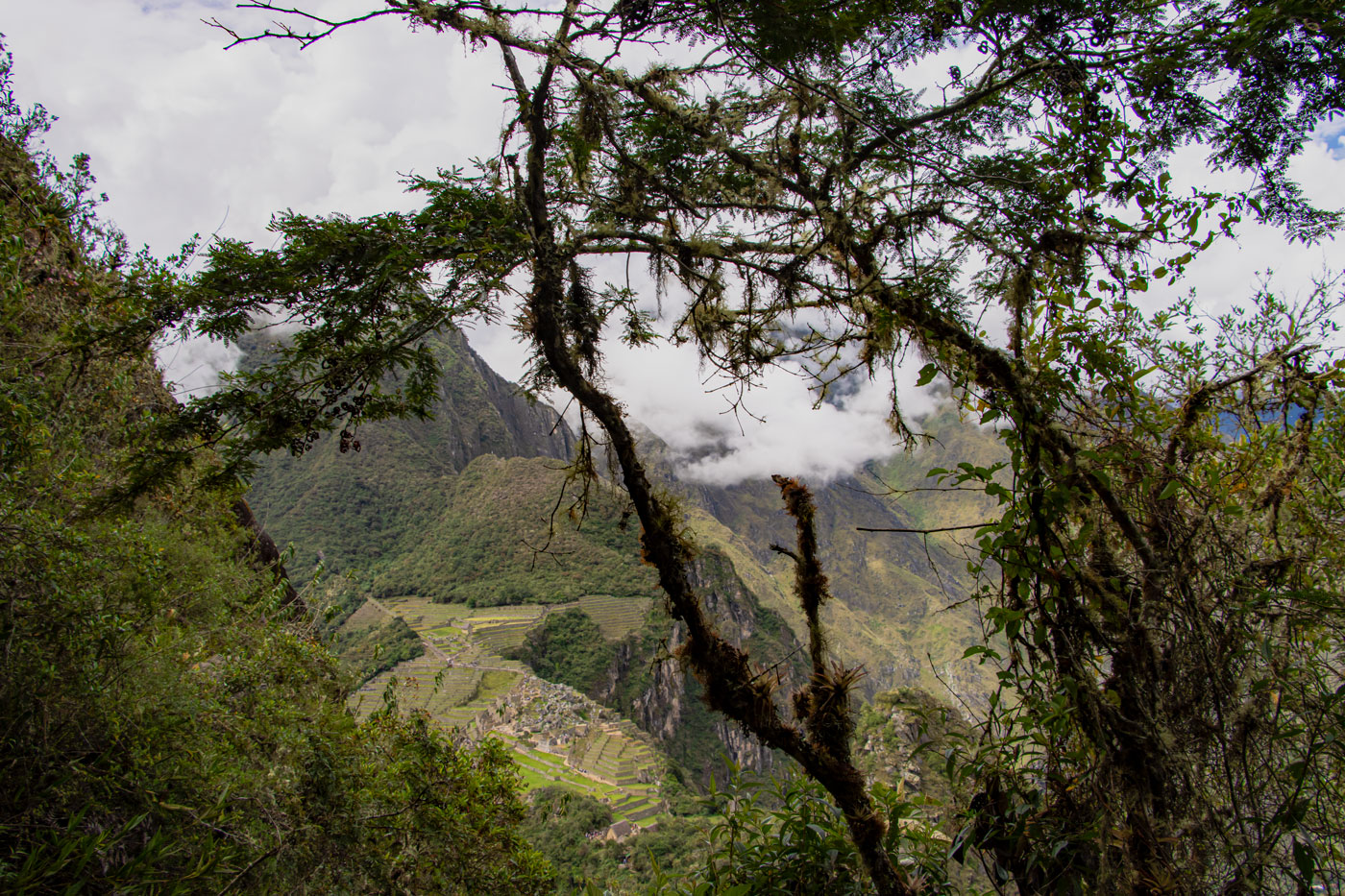 |
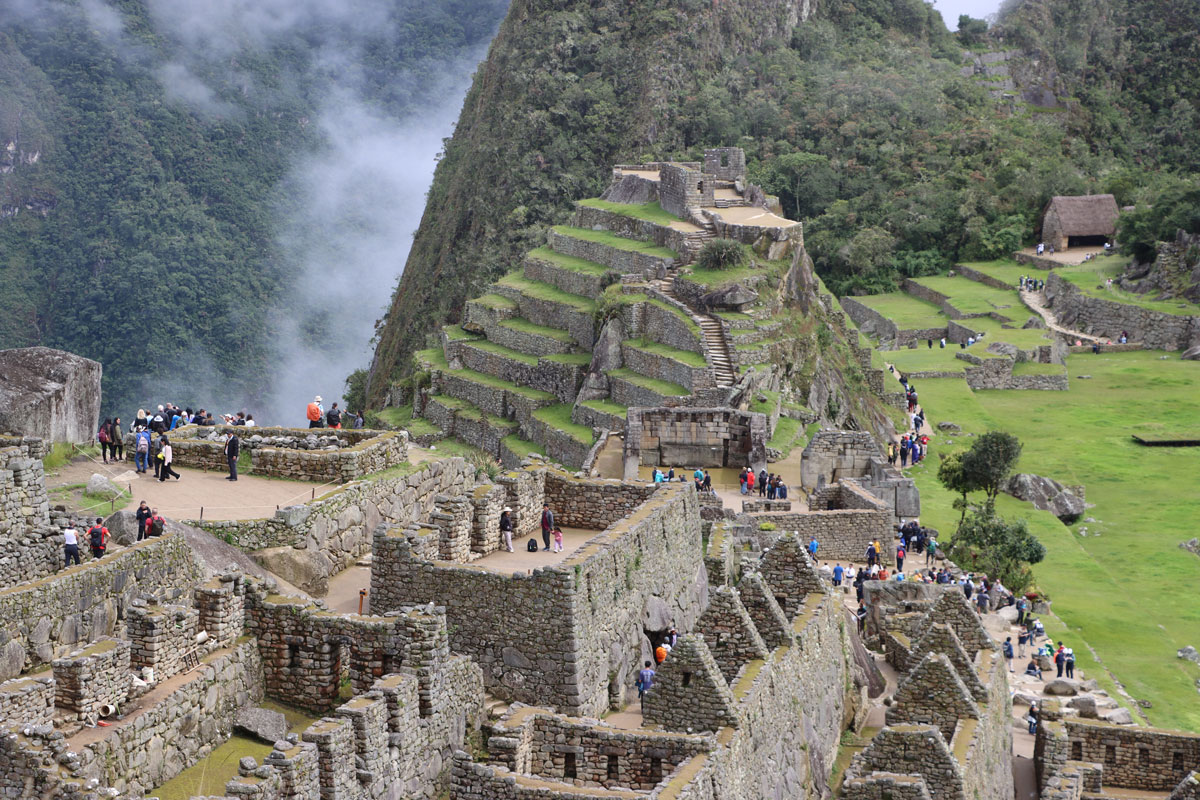 |
| Machu Picchu Panoramic |
Machu Picchu - Intiwatana |
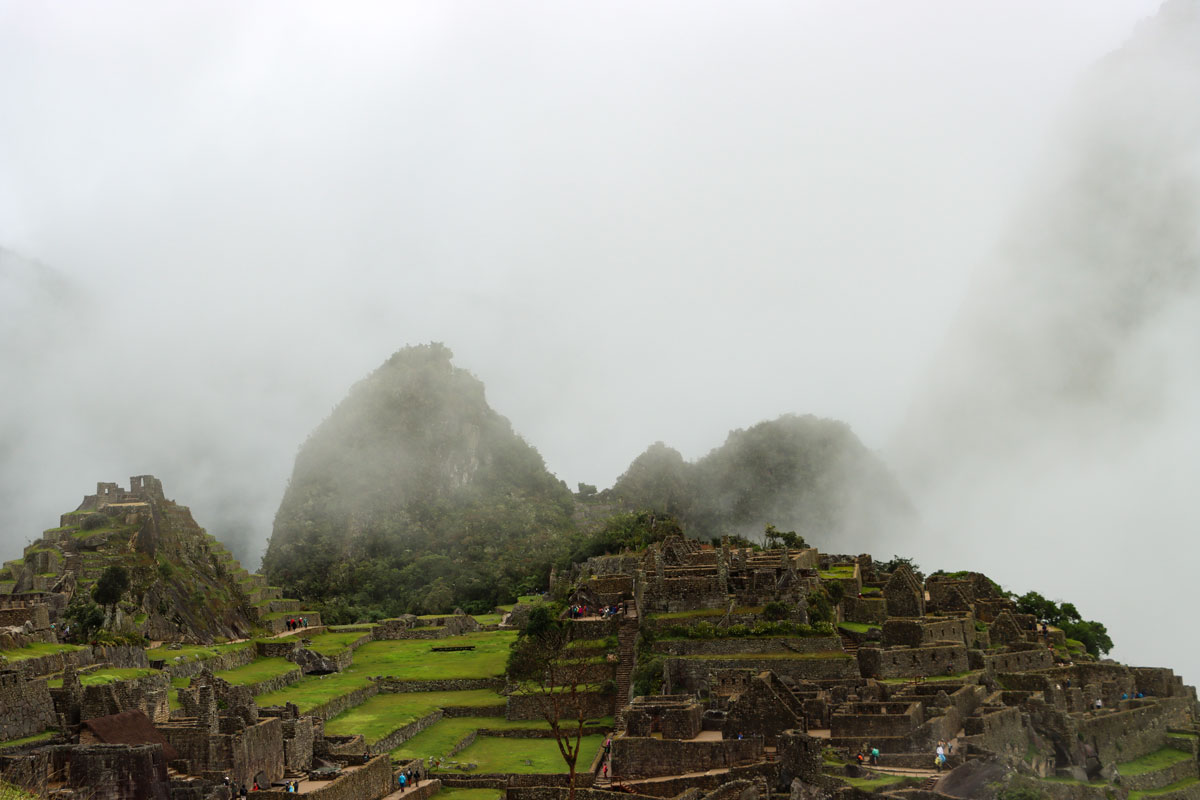 |
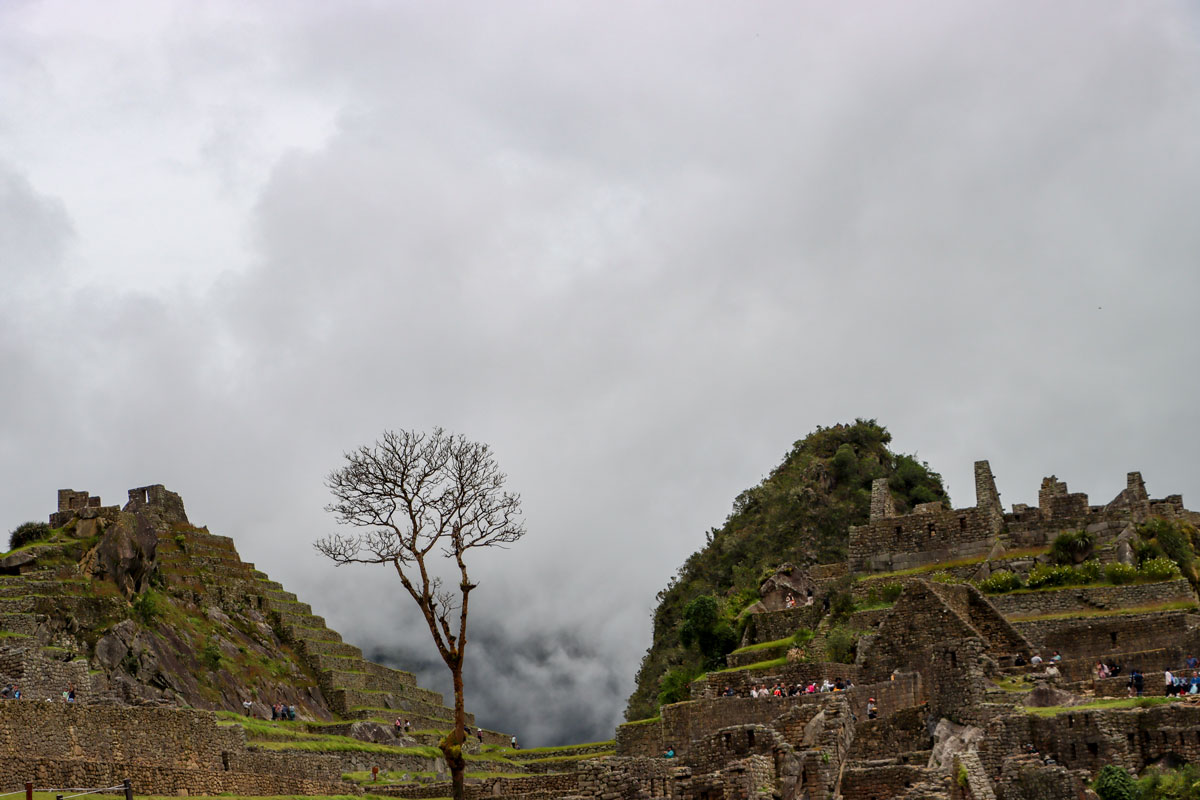 |
| Machu Picchu |
Machu Picchu Peru |
